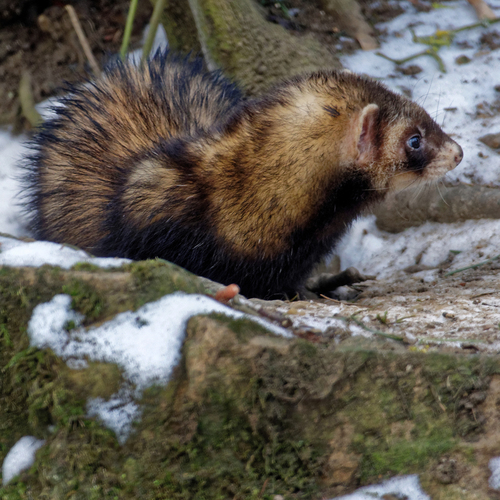
Domestic Ferret
The domestic ferret, Mustela furo, captivates with its playful antics and sleek fur. A crepuscular creature, it thrives in twilight hours, displaying keen curiosity and exceptional burrowing skills. As both a beloved pet and a natural explorer, the ferret enriches its surroundings with boundless energy.
5-9 years
Lifespan
680.389 - 2041.17 g
Weight
Length: 46 - 53 cm
Size
Brown, Black, White, Sandy
Color
4-8 months
Age of Sexual Maturity
7 weeks
Age of Weaning
15 mph
Top Speed
Characteristics
Mustela furo, commonly known as the domestic ferret, is a small, elongated mammal characterized by its playful nature and inquisitive behavior. It typically has a sleek, soft coat ranging from albino to mixtures of brown and black. Ferrets are crepuscular, enjoying active periods at dawn and dusk, and have a keen sense of smell. They are often kept as pets and are known for their burrowing and tunneling instincts.
Distribution Range of the Domestic Ferret
The domestic ferret (Mustela furo) does not have a true native region as it is a domesticated form of the European polecat (Mustela putorius). The European polecat is native to Europe and parts of North Africa. Ferrets as domesticated animals are found worldwide, primarily in human-influenced environments.
Domestic Ferret's Habitat
Environmental Conditions
Ferrets, being domesticated, primarily inhabit environments provided by humans, such as homes and farms. They can adapt to a wide range of climates as long as they are provided with adequate shelter, food, and care.
Ecological Niche
As a domesticated species, ferrets do not occupy a specific ecological niche in the wild. However, they are often used for pest control and hunting small mammals in some regions. Their ancestors, the European polecats, typically inhabit forests, grasslands, and wetlands, preying on small mammals and birds.
Copyright @ Nature Style Limited. All Rights Reserved.
 English
English